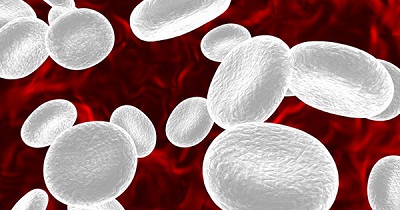
White blood cells, leukocytes, are your body's best defensive weapons in the fight against bacteria, virus and other disease-caused organisms. A low white blood cell count, or leukopenia, is a decrease in the number of these leukocytes in your blood. What's considered normal varies from one practice to another. Generally, a count that is lower than 4,000 white blood cell per micro-liter of blood is considered low, but the threshold is different in children. You have to consult your doctor if your white blood cell count is low as your body cannot fight bacteria, viruses and other threats.
Basics About Low White Blood Cell Count
In some cases, your white blood cell count may fall down to a dangerous level. It is therefore important to know the symptoms and terminology associated with this health condition.
First, you need to understand that your blood test report will use different terminologies to refer to white blood cells. For instance:
- Leukopenia: It is a decrease in the number of white blood cells.
- Neutropenia: It refers to the reduction of neutrophils that also lead to a lower white blood cell.
- Granulocytopenia: It refers to neutropenia.
Your doctor may ask for a complete blood count (CBC) to check the levels of your white blood cells. The following numbers are usually considered normal by most laboratories:
- White blood cell between 4-11 k/ul
- Monocytes between 0-7%
- Lymphocytes between 22-44%
- Neutrophils between 40-70%
- Basophils between 0-1%
- Eosinophils between 0-4%
Your doctor will check these numbers and consider other factors as well to determine the problem. They may consider how low the count falls, how long the count stays abnormally low, which type of white blood cell count is low, and what other medications you're taking now.
Your doctor may sometimes talk about your absolute neutrophils count (ANC) – they get ANC by multiplying total white blood cell by the percentage of neutrophils. Some physicians may refer to neutrophils as segs and bands (a seg is usually a bit more mature than a band). In this case, they get your ANC by adding the percentage of segs to the percentage of bands.
This info tells your physician if you have an infection. Different values of ANC mean different things. For instance, no infection is present if ANC is greater than 1500. You will be more at the risk of infection if your ANC is between 1000 and 1500. The risk becomes moderate with ANC falling between 500 and 1000. There is a high risk of infection with ANC staying in 100-500 range, and you may have to consult your doctor immediately if it's less than 100.
What Causes Low White Blood Cell Count?
A low white blood cell count is a cause of concern, and it usually requires further medical evaluation. The reason is that a lowered white blood cell count is the outcome of different disorders, diseases and conditions. In some cases, the causes will be hard to find.
|
Caused by Diseases and Disorders |
Caused by Medications and Treatments |
|
Chemotherapy Bone marrow disease Radiation exposure Leukemia Overactive spleen Liver disease Viral infection affecting bone marrow Rheumatoid arthritis vitamin deficiency AIDS |
Antibiotics Antihistamines Anticonvulsants Arsenic Chemotherapy drugs Barbiturates Anti-thyroid drugs Sulfonamides Radiation therapy. |
What Are the Possible Complications of Low White Blood Cell Count?
A poorly controlled or low white blood cell count makes you vulnerable to potentially life-threatening infectious diseases, such as fungal infection, pneumonia, parasitic diseases, and sepsis among the others. These infections can lead to life-threatening complications, including septic shock, organ failure, and recurrent infections.
When to see a doctor:
A low white blood cell count requires medical consultation, but you should call your doctor immediately if you have low white blood cell count with a temperature up to 100.5F, sudden pain, or chills and shakes. You should also call your doctor within 24 hours of witnessing sore throat, sores in the mouth, signs of bladder infection, a white coating in your mouth, blood in urine with burning sensation, or frequent urination.
How to Treat Low White Blood Cell Count
In case your white blood cell count is persistently low, your doctor or healthcare provider may suggest a treatment option. They usually opt for a number of medications, especially after each cycle of chemotherapy, to ensure your white blood cells count doesn't fall too much. The medications are Filgrastim, Sargramostims and Peg-Filgrastim.
During a treatment, especially in cancer patients, the immune system doesn't function optimally. This increases the risk of getting several types of infections. To ensure no such thing happens, your doctor may prescribe an antimicrobial medication, such as Acycolovir, Sulfamethoxazole, Intraconazole, Flucanozole, and more.